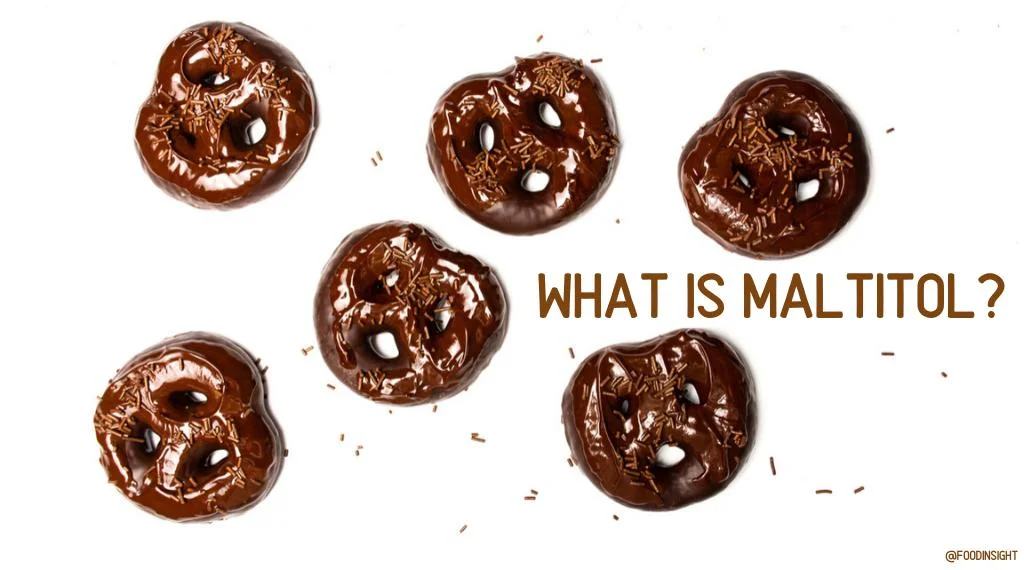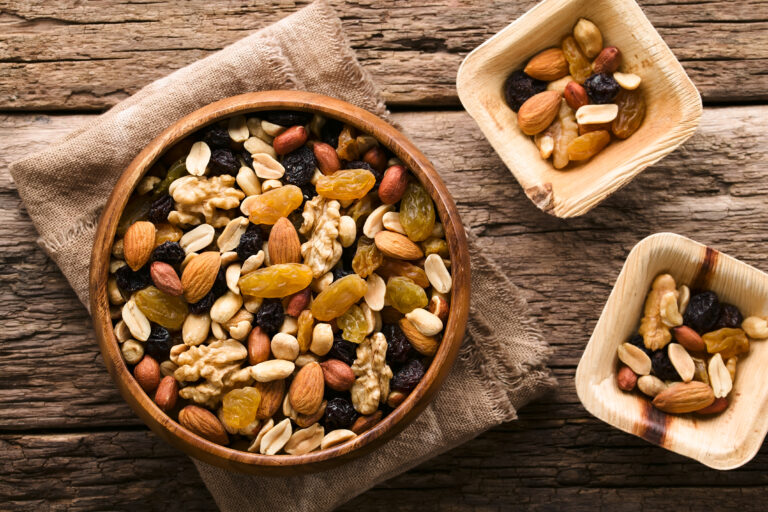
Highlights
- Maltitol is a type of carbohydrate called a sugar alcohol, or polyol.
- Maltitol contains half as many calories as sugar and is 90% as sweet.
- Maltitol is commercially produced from starch for use in baked goods, chewing gum, sugar-free chocolates, hard candies and ice cream.
- Due to maltitol’s high melting point and creamy texture, it’s used in chocolate flavored coatings on frozen items and confections.
- Of all the sugar alcohols, maltitol’s properties are the most similar to sucrose.
- Maltitol’s safety has been confirmed by multiple global health authorities.
The basics of maltitol
Maltitol (pronounced mall-ti-tall) is a type of carbohydrate called a sugar alcohol, or polyol, which are water-soluble compounds that occur naturally in many fruits and vegetables. Maltitol is produced from starches that are rich in the sugar maltose (a disaccharide consisting of two glucose molecules). It is used in food items such as baked goods, chewing gum, sugar-free chocolates, chocolate coatings, hard candies and ice cream to provide body, sweetness and creamy texture.
Maltitol’s safety has been reviewed and confirmed by health authorities around the world, including the World Health Organization, the European Union, and countries such as Australia and Canada. The U.S. Food and Drug Administration (FDA) also declares maltitol and maltitol syrups eligible for use.
While the safety of maltitol (and other sugar alcohols) is well-documented, when eaten in excessive amounts, some sugar alcohols (e.g., mannitol and sorbitol) can cause gastrointestinal discomfort, including gas, bloating and diarrhea. As a result, packaged foods that contain mannitol or sorbitol must include a warning on their label about potential laxative effects. Maltitol has been shown to be well-tolerated at commonly consumed doses and does not require a warning on products in which it’s contained.
Like most sugar alcohols, maltitol is neither as sweet nor as calorie–dense as sugar. Maltitol is about 90% as sweet as sugar and has about half as many calories per gram (2.1 calories for maltitol compared with 4 calories for sugar).
Maltitol and health
Maltitol’s contributions to health go beyond calories. Two areas in which sugar alcohols such as maltitol are known for their positive effects are oral health and impact on blood sugar.
Oral health
Sugar alcohols have been shown to benefit oral health in several ways. When we eat a food containing maltitol, bacteria in our mouths begin to metabolize it, though this process is incomplete because we lack the necessary enzymes. As a result, oral bacteria produce much less acid (10–30% less) compared with sugar. Thus, maltitol is considered noncariogenic (ie. “tooth-friendly”) because the acids produced from maltitol metabolism do not contribute to enamel erosion or cavity formation.
The act of chewing also protects teeth from cavity-causing bacteria by promoting the flow of saliva. This increased saliva and other noncariogenic properties (e.g., sweetness and cool taste) are why sugar alcohols like maltitol, mannitol, sorbitol and xylitol are used in sugar-free chewing gum. Because of these attributes, the FDA recognizes maltitol and other sugar alcohols as beneficial to oral health.
Blood sugar
Like other sugar alcohols (with the exception of erythritol), maltitol contains calories in the form of carbohydrate. Maltitol is slowly and incompletely metabolized in the small intestine into equal amounts of glucose and sorbitol. Glucose is readily absorbed in the small intestine and sorbitol continues to the large intestine where it is fermented by microbes in the gut. Because of this, maltitol consumption (compared with an equal amount of sugar) requires less insulin secretion, which helps keep blood glucose levels lower.
Recommended intakes
Maltitol is not an essential part of a balanced diet. Because sorbitol results from maltitol digestion, consuming too much maltitol at one time may cause gastrointestinal discomfort. But these effects may not be the same for everyone. Consuming foods that contain 30 grams of maltitol have been shown to be well tolerated by most people, with mild gastrointestinal effects being observed when consuming 40 grams of maltitol. Very high consumption of maltitol may result in a laxative effect.
For those following a low Fermentable Oligosaccharides Disaccharides Monosaccharides And Polyols (FODMAP) diet, food sources of maltitol are monitored because maltitol is a type of polyol.
Food sources of maltitol
Maltitol is not found abundantly in nature. It is commercially produced from starch to help reduce calories from sugars in packaged foods. Of all the sugar alcohols, maltitol’s properties are the most similar to sucrose. Because of this, maltitol is commonly used in baked goods, chewing gum, sugar-free chocolates, chocolate coatings, hard candies and ice cream for the desired attributes of creamy texture, sweetness, high melting point and color retention at high temperatures.



